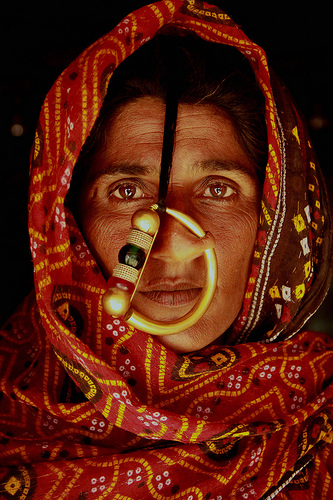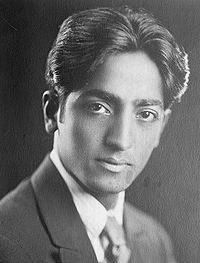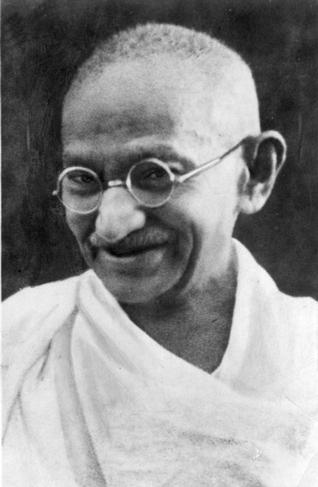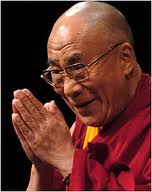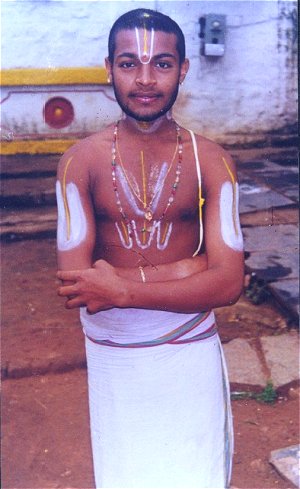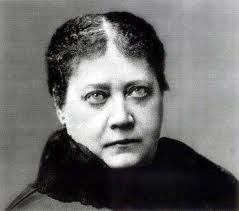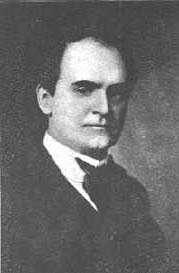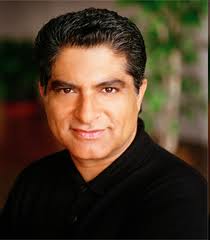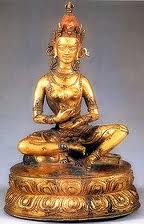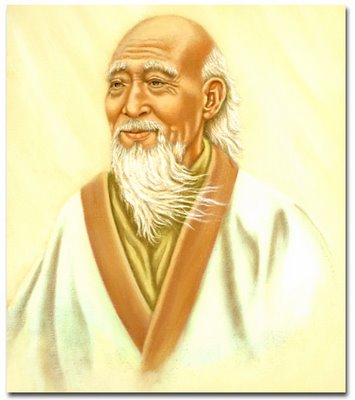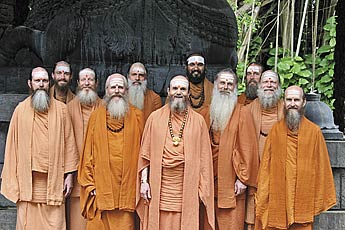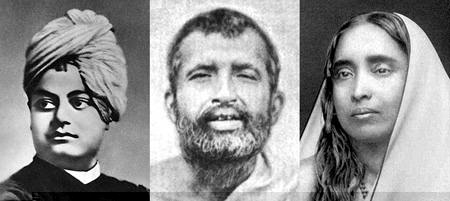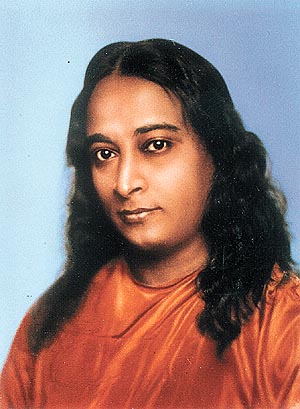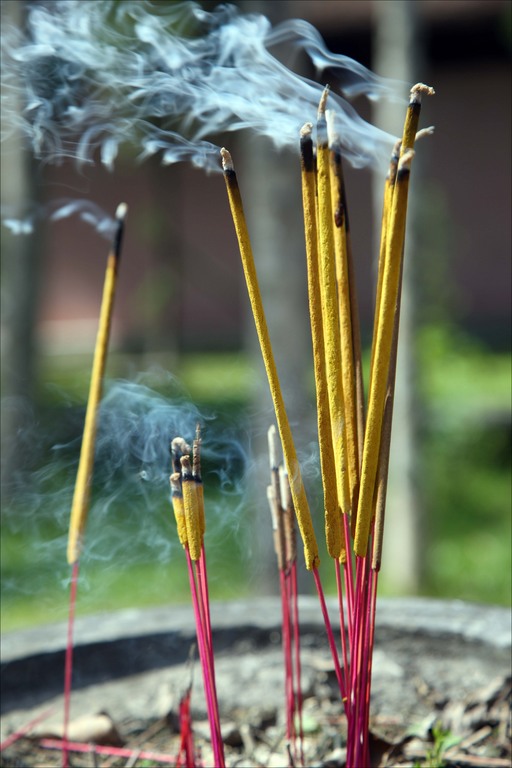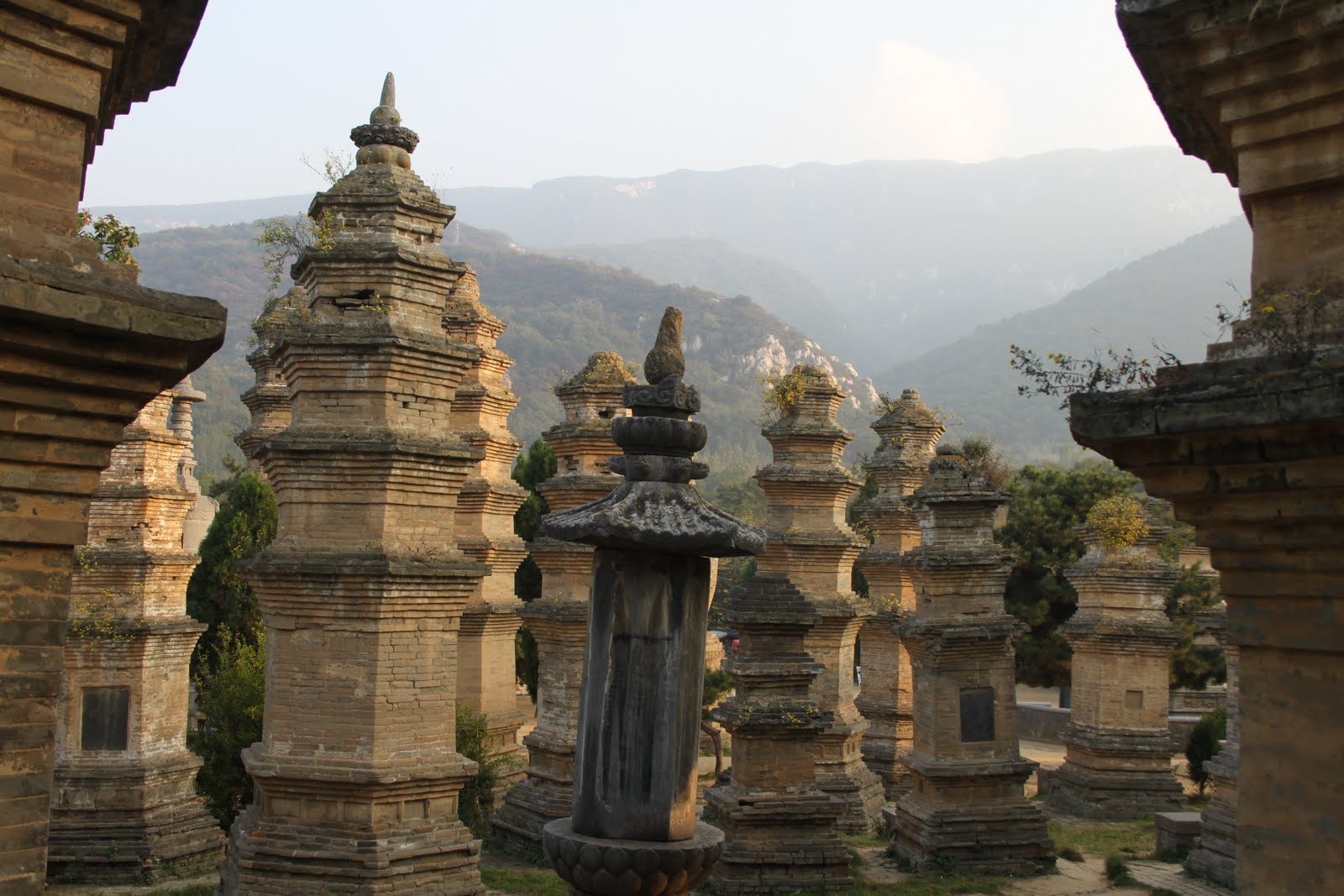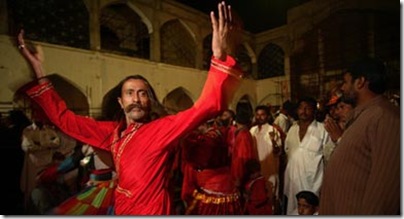Welcome to...
      Your Personal Path to Spirit...Â
         What is your Mission in this Life?
A Spiritual Haven for All People and for All Times!Â
Copyright 2010 Mystic Tiger Ashram/Sharon R. StoneÂ
All Rights Reserved. No part of this site in whole or in part may be copied.without written permission of the administrator.Â
 | ||||||
 | ||||
Who are YOU?Â
Who do you long to be?
Various types of Roles for Spiritual beings from Warrior Women to Shamanic healers, Priests, Priestesses, Gurus and Teachers to Midwives, Holistic Healers & Herbalists....
Many are called to some form of ministry. There are varying degrees and types of ministries and ministers that seek to fill these roles.
Joseph Campbell speaks of the power of following one's bliss or self-perceived destiny in order to experience complete fulfillment while on this earth both in the 'Power of Myth' and the 'Hero's Journey'.
The current pull toward video games, the Society for Creative Anachronism (SCA) and Renaissance fairs where lords and ladies, priests and priestesses, gypsies, healers and psychics reign are strong indicators that this current era of humanity is completely fascinated with their past selves and their future destinies.Â
In video games such as Wizard 101 for kids, Diablo, Dungeons and Dragons, Everquest and many more put our current 'hero's' into roles filled with both power and purpose. These are things which have been castrated from our current societies due to the influence and intimidation the overtly religious. We have forgotten our roots and our very souls.Â
We all wonder what happened to this society that everyone is on drugs both legal and illegal, unfaithful to their spouses, not caring for their children etc...when we don't have to look further than there is no 'rite of passage' for men anymore or for warrior women to sink their teeth into and give them a reason to get up in the mornings. When I give people readings the number one question is "What is my destiny"?Â
Individuals are literally DYING to know what they can do to connect back into their spiritual heritage either as a spiritual being, warrior hero or healer hero archetype. They are going nuts. The gaming community at large are all too aware of this, which is why the games rule! What can be done though to bring these 'hero type roles' back into mainstream society without scaring the establishment into wanting to lock us all up?Â
There are some roles that are briefly explored below that are powerful ways to affect society positively and that will bring the needed fulfillment that is currently lacking in the hearts and minds of men and women today...
Shaman's and Healer's
Yogi's and Yogini's orÂ
  Female/Male Warrior Archetypes
Priest's and Priestesses
Swami's, Gurus and Teacher's
Holistic Healers and Herbalists
 | ||||||
Yogi's &Â
Yogini's orÂ
SpiritualÂ
Women Warriors...
Yogini is the feminine form corresponding to the masculine yogi. Yoginis are known to possess a steadfast mind, which they cultivate through the disciplined pursuit of transcendence, an idea that is central to the practice of yoga. Tantric scholars have described yoginis as independent, outspoken women with graceful spirits, without whom yoga would fail to achieve its full, fruitful purpose.
Though the leaders of the modern Yoga-asana & meditation tradition have often been male, the vast majority of modern practitioners are female, including many who have attained mastery through the primary Yoga of the embodied Shakti life mysteries of the life cycle and mothering. Only the female can awaken the muladhara chakra (the seat of the Kundalini-shakti) via fertility and sexuality; the male must use kriya Yoga.
In the Hindu tradition, mother is first guru (teacher) and in the Yoga tradition, proper respect of Yoginis is a necessary part of the path to liberation. A Yogini is the sacred feminine force made incarnate: the goddesses of mythology (Lakshmi, Durga, Kali) as well as the ordinary human woman who is enlightened, both having exuberant passion, spiritual powers and deep insight, capable of giving birth to saints, peacemakers, and Yogis.
In the Tibetan Buddhism and Bön tradition, a female practitioner is known as a ngagma (see ngagpa), and in the Drikung Kagyu school of Buddhism, togdenma (Tenzin Palmo). These married tantric practitioners are required to devote significant time to retreat and spiritual practice. Ngagma are particularly known for performing birth rituals, weddings, funerals, divinations, and pacification of spiritual disruptions. Some ngagma are comparable in practice to the Mahasidda yoginis of Indian Buddhism.
Yogini as tantrika
According to the Hatha-Yoga-Pradipika text, a yogini is more specifically a woman initiate who can preserve her own genital ejaculate (rajas) and contain the male semen (bindu) by means of the practice of the vajroli-mudra, also practiced in reverse by advanced yogis.
The Sixty-Four Yogini temples
There are four major extant sixty four yogini temples in India, two of them are in Orissa and the other two are in Madhya Pradesh. One of the most impressive yogini temples in Orissa is the 9th century CE hypaethral Chausathi yogini (sixty-four yogini) temple located at Hirapur in Khurda district, 15 km south of Bhubaneshwar. Another hypaethral sixty-four yogini temple in Orissa is the Chausathi yogini pitha in Ranipur-Jharial, near Titilagarh in Balangir district. Presently only 62 images are found in this temple.
Two notable Yogini temples in Madhya Pradesh are the 9th century CE Chaunsath yogini temple to the southwest of the western group of temples in Khajuraho, near Chhatarpur in Chhatarpur District and the 10th century CE Chaunsath yogini mandir in Bhedaghat, near Jabalpur in Jabalpur district.
The iconographies of the Yogini images in four Yogini temples are not uniform. In Hirapur yogini temple, all Yogini images are with their vahanas (vehicles) and in standing posture. In Ranipur-Jharial temple the yogini images are in dancing posture. In Bhedaghat temple Yogini images are seated in Lalitasana.
Association with Matrikas
Often the Matrikas are confused with the Yoginis which may be sixty-four or eighty-one. In Sanskrit literature the Yoginis have been represented as the attendants or various manifestations of Durga engaged in fighting with the demons Shumbha and Nishumbha, and the principal Yoginis are identified with the Matrikas.[16] Other Yoginis are described as born from one or more Matrikas. The derivation of 64 Yogini from 8 Matrikas became a tradition. By mid- 11th century, the connection between Yoginis and Matrikas had become common lore. The Mandala (circle) and chakra of Yoginis were used alternatively. The 81 Yoginis evolve from a group of nine Matrikas, instead of seven or eight. The Saptamatrika (Brahmi, Maheshvari, Kaumari, Vaishnavi, Varahi, Indrani (Aindri) and Chamundi) joined by Candika and Mahalakshmi form the nine Matrika cluster. Each Matrika is considered to be a Yogini and is associate with eight other Yoginis resulting in the troupe of 81 (nine times nine).
Source: Wikipedia
Priests &Â
Priestesses
"A priest is a person authorized to perform the sacred rites of a religion, especially as a mediatory agent between humans and deities. They also have the authority or power to administer religious rites; in particular, rites of sacrifice to, and propitiation of, a deity or deities. Their office or position is the priesthood, a term which also may apply to such persons collectively.
Priests and priestesses have been known since the earliest of times and in the simplest societies. They exist in all or some branches of Judaism, Christianity, Shintoism, Hinduism and many other religions. They are generally regarded as having positive contact with the deity or deities of the religion to which they subscribe, often interpreting the meaning of events and performing the rituals of the religion. Priests are leaders to whom other believers will often turn for advice on spiritual matters.
In many religions, being a priest or priestess is a full-time position, ruling out any other career. In other cases it is a part-time role. For example in the early history of Iceland the chieftains were entitled goði, a word meaning "priest". As seen in the saga of Hrafnkell Freysgoði, however, being a priest consisted merely of offering periodic sacrifices to the Norse gods and goddesses; it was not a full-time role, nor did it involve ordination.
In some religions, being a priest or priestess is by human election or human choice. In Judaism the priesthood is inherited in familial lines.
(Some priestesses are listed below but you owe it to yourself to do a thorough study of this important role through many different avenues.)
Ancient priestesses
Sumerian and Akkadian Entu or EN were top-ranking priestesses who were distinguished with special ceremonial attire and held equal status to high priests. They owned property, transacted business, and initiated the hieros gamos ceremony with priests and kings.[2]
Nadītu served as priestesses in the temples of Inanna in the ancient city of Erech. They were recruited from the highest families in the land and were supposed to remain childless, owned property, and transacted business.
The Sumerian word NIN, EREÅ in Akkadian, is the sign for "lady." NIN.DINGIR (Akkadian entu) "divine lady," a priestess.
In Sumerian epic texts such as Enmerkar and the Lord of Aratta, Nu-Gig were priestesses in temples dedicated to Inanna and may be a reference to the goddess herself.[3]
Puabi was a Semitic Akkadian queen or a priestess.
In the Hebrew Bible, (קדשה) Qedesha or Kedeshah, derived from the root Q-D-Š[4][5] were temple prostitutes usually associated with the goddess Asherah.
Quadishtu served in the temples of the Sumerian goddess Qetesh.
Ishtaritu specialized in the arts of dancing, music, and singing and they served in the temples of Ishtar.[6]
In the Epic of Gilgamesh, priestess Shamhat tamed wild Enkidu after "six days and seven nights."
En-hedu-ana, Akkadian 2285 BC - 2250 BC was the first known holder of the title, "En Priestess."
Gerarai fourteen Athenian matrons of Dionysus who presided over sacrifices and participated in the festivals of Anthesteria."
Source: Wikipedia
ShamanismÂ
& Healers
Shamanism is an anthropological term referencing a range of beliefs and practices regarding communication with the spiritual world.[2] To quote Eliade: "A first definition of this complex phenomenon, and perhaps the least hazardous, will be: shamanism = technique of ecstasy."[3] Shamanism encompasses the belief that shamans are intermediaries or messengers between the human world and the spirit worlds. Shamans are said to treat ailments/illness by mending the soul. Alleviating traumas affecting the soul/spirit restores the physical body of the individual to balance and wholeness. The shaman also enters supernatural realms or dimensions to obtain solutions to problems afflicting the community. Shamans may visit other worlds/dimensions to bring guidance to misguided souls and to ameliorate illnesses of the human soul caused by foreign elements. The shaman operates primarily within the spiritual world, which in turn affects the human world. The restoration of balance results in the elimination of the ailment.[4]
In areas where indigenous shamanism still thrives, there is a clear divide between "lay" people (who participate in and practice shamanic belief and tradition) and the professionals or specialists themselves. A lay practitioner of shamanism is not awarded any special title, as this is the norm within traditional societies. A shamanic professional, who is a highly-trained and very often spiritually selected individual, is sometimes known as a shaman[not in citation given]( /ˈʃɑË?mÉ™n/ shah-mÉ™n or /ˈʃeɪmÉ™n/ shay-mÉ™n).[5
Source Wikipedia
Guru's &
Teacher's
A guru (Sanskrit: ग�र�) is one who is regarded as having great knowledge, wisdom, and authority in a certain area, and who uses it to guide others (teacher). Other forms of manifestation of this principle can include parents, school teachers, non-human objects (books) and even one's own intellectual discipline, if the aforementioned are in a guidance role.[1]
In the religious sense the term is commonly used in Hinduism, as well as in other Indian religions and new religious movements. Finding a true guru is often held to be a prerequisite for attaining self-realization. In contemporary India, the word guru is widely used with the general meaning of "teacher". In Western usage, the meaning of guru has been extended to cover anyone who acquires followers, though not necessarily in an established school of philosophy or religion.[2] In a further Western extension, guru is used, or even misused from the original religious meaning, to refer to a person who has authority because of his or her perceived secular knowledge or skills, such as in business.
The importance of finding a guru who can impart transcendental knowledge (vidyÄ?) is emphasised in Hinduism. One of the main Hindu texts, the Bhagavad Gita, is a dialogue between God in the form of Krishna and his friend Arjuna, a Kshatriya prince who accepts Krishna as his guru on the battlefield, prior to a large battle. Not only does this dialogue outline many of the ideals of Hinduism, but their relationship is considered an ideal one of Guru-Shishya. In the Gita, Krishna speaks to Arjuna of the importance of finding a guru:
Acquire the transcendental knowledge from a Self-realized master by humble reverence, by sincere inquiry, and by service. The wise ones who have realized the Truth will impart the Knowledge to you.[18]
In the sentence mentioned above, guru is used more or less interchangeably with satguru (literally: true teacher) and satpurusha. Compare also Swami. The disciple of a guru is called a śiṣya or chela. Often a guru lives in an ashram or in a gurukula (the guru's household), together with his disciples. The lineage of a guru, spread by disciples who carry on the guru's message, is known as the guru parampara, or disciplic succession.
Some Hindu denominations like BAPS Swaminarayan Sanstha hold that a personal relationship with a living guru, revered as the embodiment of God, is essential in seeking moksha. The guru is the one who guides his or her disciple to become jivanmukta, the liberated soul able to achieve salvation in his or her lifetime.
The role of the guru continues in the original sense of the word in such Hindu traditions as the VedÄ?nta, yoga, tantra and bhakti schools. Indeed, it is now a standard part of Hinduism that a guru is one's spiritual guide on earth. In some more mystical traditions it is believed that the guru could awaken dormant spiritual knowledge within the pupil. The act of doing this is known as shaktipat.
In Hinduism, the guru is considered a respected person with saintly qualities who enlightens the mind of his or her disciple, an educator from whom one receives the initiatory mantra, and one who instructs in rituals and religious ceremonies. The Vishnu Smriti and Manu Smriti regard the teacher and the mother and father as the most venerable influences on an individual.
Some influential gurus in the Hindu tradition were Adi Shankaracharya, Shri Ramakrishna, Shri Ramana Maharshi and Shri Chaitanya Mahaprabhu. Other gurus who continued the yogic tradition into the 20th century include:Sadhguru Jaggi Vasudev, Sri Sri Ravi Shankar, Shri Aurobindo Ghosh, Sri Chandrashekarendra Saraswati (The Sage of Kanchi), Swami Sivananda, Paramahansa Yogananda, Swami Chinmayananda, Swami Vivekananda and A. C. Bhaktivedanta Swami Prabhupada. See also the list of Hindu gurus.
In Indian culture, a person without a guru or a teacher (acharya) was once looked down on as an orphan or unfortunate one. The word anatha in Sanskrit means "the one without a teacher." An acharya is the giver of gyan (knowledge) in the form of shiksha (instruction). A guru also gives diksha initiation which is the spiritual awakening of the disciple by the grace of the guru. Diksha is also considered to be the procedure of bestowing the divine powers of a guru upon the disciple, through which the disciple progresses continuously along the path to divinity.
The concept of the "guru" can be traced as far back as the early Upanishads, where the idea of the Divine Teacher on earth first manifested from its early Brahmin associations.
Gurus do not appeal to scriptures for their authority, nor are they prophets who declare the will of God. Indeed, there is an understanding in some forms of Hinduism that if the devotee were presented with the guru and God, first he would pay respect to the guru, since the guru had been instrumental in leading him to God.[19][20][21] Some traditions claim "Guru, God and Self" (Self meaning soul, not personality) are one and the same. Saints and poets in India have expressed the following views about the relationship between Guru and God:
The Inner Guru
There is a subtle principle that resides within all of us, which is unborn and undying. It is a repository of infinite strength, wisdom, abundance and auspiciousness. It is bliss infinite and the giver of supreme happiness. It is the support-less, infinite sky of supreme wisdom. It is the silent witness of everything. It is neither male, nor female. It exists beyond all dualities. It is not bounded by time, space or conditions. This witnessing presence is pure and clear like the sky, luminous like the morning Sun. It is our inner Guru.[25] Â
Source Wikipedia
Swami's
What is a Swami?
Often people ask questions like, "What is a swami?" or "Why did you become a swami?" In areas such as Rishikesh or Haridwar, India, along the Ganges, it is not a question that needs to arise. Many swamis are there, and all you have to do is say, "Behold, those are swamis!" However, in geographical areas where there are few swamis wandering around, these are more curious questions.
The word swami means master; it means striving for the mastery over one's smaller self and habit patterns, so that the eternal Self within may come shining through. The act of becoming a swami is not so much an acting of becoming, of adding on, of allegiance, as it is an act of setting aside, of renunciation. A swami is a monk, one who has set aside all of the limited, worldly pursuits, so as to devote full time effort to the direct experience of the highest spiritual realization, and to the service of others along those lines. Renunciation is not anti-world, in any sense of the world being a bad place. Rather, it is a matter of priorities about how one will spend his or her time, the twenty-four hours in a day, and the seven days in a week. Traditionally renunciation is the fourth of four stages of life, although one who feels the call might renounce and become a swami at any stage of life.
While there are many swami lineages, with a wide range of beliefs, perspectives, and loyalties, a swami of the Himalayan tradition will at some point no longer claim allegiance to any particular group or religion, seeing all as the outpouring of the one, indivisible reality, truth, or God, which goes by many names to different people of different cultures, including the word Brahman, the Absolute Reality. Though most would likely have self-identified as Hindu, other individual practitioners in the Himalayan tradition have personal roots in virtually all of the world's most known cultures and religions. I was personally never initiated into, nor have joined any particular religion in this life. During childhood the decisions about religion were left by parents for my own later choice. My renunciation as a swami has been one of setting aside any sense of exclusive identity so as to embrace the whole. (See also What is Sanatana Dharma?, Sanatana Dharma or Hinduism?, and About the Words Hindu and Hinduism)
The true samnyasi (renunciate or ascetic) does not identify with any form of division or multiplicity. The Sanskrit word samnyasi comes from samnyasyati, meaning he renounces. Sam means together, ni means down, and asyati means he throws. He or she throws down any personal identity whatsoever, including not only those related to physical objects, but also to nationality, religion, work or family identities. If there is the external appearance of any identities such as these, it is only in the perception of, and for the benefit of others whom the samnyasi may serve. Even the name used by the samnyasi or swami is primarily for the convenience of others.
The goal of the samnyasi or swami is "atmano mokshartham jagat hitaya cha" which means one who strives "for the realization and liberation of the Self and for the benefit of the world."
There are deeper, heartfelt aspects of these questions "What is a swami?" or "Why did you become a swami?". One of the most inspiring and validating writings I have encountered is a short paper written by Pandit Usharbudh Arya, entitled "What is Renunciation?" (Scroll down to see this paper) This remains in my heart the clearest written description of what it really means to be a swami. It captures not only an accurate definition, but also a description of the ideal aimed for, and the spirit of the inner longing for one drawn to this path. It well answers the questions, "What is a swami?" and "Why did you become a swami?" The entire text of the paper is below.
Swami Rama has also written a succinct and clear description of the path of renunciation in his commentary on the Bhagavad Gita. Here, he describes seven important points about the path of the swamis. That text is also included below, and has been entitled "The Basis of Renunciation."
If you are not familiar with swamis or other monks, and are a sincere seeker, it is very important to know and keep in mind that the path of Self-Realization is not exclusive to the renunciates. The two paths of renunciation and action in the world are equally valid and fruitful for aspirants who are devoutly committed to the practices of contemplation and meditation.
- Swami Jnaneshvara
------------------------------------
What is Renunciation?
(written in 1986)
By Pandit Usharbudh Arya (Now Swami Veda Bharati)
Renunciation is the final forgetting of "I" and "mine". It is that mode of thought and experience in which the entire creation becomes as oneself. One who has taken vows of renunciation, and thereby become a swami, considers himself a member of every family on earth, with their physical and spiritual welfare as his prime concern. He is as concerned for them as the novices in the practice of love, leading a limited worldly life, are concerned with their own families. A renunciate claims an intimate relationship with all, attached to none. "Attached to none" means that he claims nothing from them, desires and seeks nothing from anyone, needs no emotional support from anyone but gives the support and encouragement to all. Like the rising sun, wearing orange/saffron robes, he must dispense light to every nook and cranny of the world. Wherever the evening catches him is his home whether under someone's roof or under God's own sky. Free and ever moving like the breeze he gives life-breath to all. Ever-flowing like a river, he quenches, cleanses and irrigates all. Like a fire he purifies all. Like a light he illuminates all. Like the sky, he remains untouched, clear, calm, giving his space to everyone; he invites every being to find rest, solace, succor and consolation within his field of being that emanates from him.
A candidate for swamihood walks into the holy river Ganges, and doffs all clothing. S/he is given fresh robes by the guru for convention's sake. Mentally s/he must be as Adam or Eve before the fall, and totally genderless, for s/he is no longer a physical body in his personal self-identification. Yet s/he must continue to bestow the best of care on the physical vehicle so that s/he may serve others all the better. As s/he owns nothing one's own (svam), s/he is called a swami, the master of it all, for s/he has become a gentle master over his own will.
In taking the vows of swamihood one declares "a-bhyam" to all living beings: I am a threat to none, a danger to none; may no living being henceforth fear me. In a great fire-offering he names each and all his organs, sense-faculties, pranas, mental states and functions, and as he pours a libation of ghee (clarified butter) into the fire, as though offering his own faculties to the universal fire, he declares regarding each of them, "No more mine"; "free of all dust I had gathered heretofore, I am now sinless; I am light.
Thereafter, if he owns anything it is only formally in his name, as a convenience for his universal mission of service and love for which he grants and distributes of himself freely, unstintingly. He must avoid all honor and recognition, unless that too would enhance his service to the world. He must do, speak, think, wear, eat whatever would help those whom he serves.
One may renounce at any stage of life whenever his universal love crosses the boundaries of limitation. Renunciation is not, definitely not, an abandoning of any duties. Those who have any claims on him first renounce their claims on him and grant him their happy permission to let go. Theirs is no less an act of renunciation, more difficult, because they have yet to struggle with the world.
He renounces because his karma with them has been fulfilled; all he leaves behind is their happy thoughts about him. There are cases in history where someone became a swami by speaking a lie that he had no relatives or that he had obtained their happy permission. Â After it was found out to be untrue, such people were expelled from the monastic order and told to fulfill their worldly duties. Â Continued below left...
What is a Swami Continued...
In some cases a renunciate's guru may order that he continue to perform some residual duties to his erstwhile family, for example, continuing to finance a child's education. The great Shankara returned to his dying mother and performed her last rites. Why should not a renunciate do these duties which he would ordinarily perform for any member of his universal family, without claims or attachments and free of any weak emotions. He refers to his pre-renunciation family as purvashram: "relations from my previous ashram". [previous stage of life]
The act of renunciation is therefore not an escape, not a divorce. Just as someone taking the vows as a Catholic nun, and changing her name, is not denouncing her parents, only enhancing the scope of her love, so it is with someone becoming a swami from out of married life. The spouse of such a one considers him/herself wedded but claiming nothing from the swami, for his personage is now sacred, beyond flesh and beyond the reach of touch. The parents, spouse, children who have let go of their child, spouse and parent are to be admired for their renunciation so that someone may save the entire world freely.
In the Indian Law the act of sanyasa, or becoming a swami, is regarded as civil death. For example, any property acquired after becoming a swami passes to one's disciples following the swami's death, and not to the children of one's body in the previous ashram [stage of life].
H. H. Swami Rama says that human beings are in unfinished product. A swami is the finished product, ideally speaking; or aspiring to become a finished product soon, in this very life; this is the ultimate in human evolution. He has no specific name (except for others' convenience so they may refer to him), no birthplace, no caste, no social grouping, no religion, no countries. He is a citizen of all earth, everyone's closest relative to whom anyone may confide anything. He is the kind shower when someone is suffering a drought of love.
In the life of a spiritual seeker or teacher there comes a moment when a decision can no longer be postponed. One passes through emotions like those of a bride: sadness at separation from past love, looking forward to a future of a different expansion of love, enhancing oneself. All weak emotion is to be watched and conquered--not by suppressing it but by merging the little love into the greater one. One simply knows, at a certain time in life, that the pressing details of one's business from the worldly life will never be finished--while billions are dying without light. He ties up as many loose ends as possible, and walks out carrying a torch into the night. At that moment of decision, no consideration is weighty enough to tie his feet. The call to walk (to become a pari-vrajaka) has come:
for the benefit of the many, bahu-jana-hitaya
for the comfort of the many, baha-jana-sukhaya,
as the Buddha said when exhorted and sent out his first batch of monks. At that moment one's own physical discomforts, mental sadnesses, and such, becomes as unimportant as a mother's need to get a full night's sleep is ignored when her infant is suffering from a burning fever.
Such a moment is a moment of dying; dying to one's erstwhile limited self. The renunciate performs that ceremony to himself which is normally performed by relatives following the funeral of someone physically dead. H. H. Swami Rama tells the story of a man in a certain city in India. Every astrologer in the city predicted that he would die on a certain morning. The evening before the predicted date for this man's death Shri Swamiji arrived in the city and the man went to see him. This dialogue followed:
He: Swamiji, every astrologer in the city predicts that I am to die tomorrow.
Swamiji: Do you want to live on?
He: Indeed, I do.
Swamiji: Then renounce the worldly life and become a swami tomorrow morning; die to your previous world.
He: Oh, but what will my wife say?
Swamiji: What will she say if you died in the morning?
The gentleman went home, got his wife's permission, became a swami, and lived on.
On the day one is meant to become a swami, if one decides not to renounce but to continue to cling on, the physical death is bound to grab him by the hair, for his work for "the previous ashram" is already done.
Intense sadhana (undertaking concentrated spiritual observances); the realization of universal love; the satisfaction derived from seeing the others' ignorance and consequent suffering have been reduced; and the unbounded grace of one's guru; these help a novice renunciate to walk on firmly and not to falter.
As to the renunciate's well-being, besides the guru's grace, the whole world takes care of him ever so lovingly. Those above him bless him, those below him are ever so grateful. How wonderful is the life of a renunciate, the life of an all-embracing, incorruptible sky.
Reach for the sky, friends!
 | ||||||
The Basis of Renunciation
(from The Perennial Psychology of the Bhagavad Gita, 1985)
By Swami Rama
The goal of the renunciate is to fathom one after another of the various stages of consciousness that lead to the innermost One. The following principles are the basis of the path of renunciation:
The renunciate directs all his energy toward the attainment of the goal of life, Self-realization.
He does not waste time and energy pursuing desires based on self-interest.
The renunciate's journey is inward; it is neither action nor inaction nor retreat. It consists of performing actions mentally and directing the mind and its modifications inward rather than toward the external world.
Non-attachment is attained spontaneously because the renunciate is not involved with objects; they have all been consciously renounced.
With pure reason all the samskaras are burned in the fire of knowledge.
There remains only one desire: the desire for Self-realization. That desire does not motivate one to do actions in the external world but becomes a means to build determination, will power, and one-pointedness. Therefore such desire is an essential means rather than an obstacle in the path of sadhana.
In the path of renunciation, Self-realization alone is the goal, and any action that does not become a means is firmly rejected and renounced. There is no half-here and half-there; total dedication and devotion are essential limbs for renunciation.
This path of the rare few is the highest of all. It is difficult but not impossible. Those who are fully prepared should walk this path of fire and light. They should not listen to the suggestions of those who are not capable of following the path of renunciation.
Those who are not prepared to become renunciates should not think they cannot realize the Self. That which is important to understand and attain is the state of non-attachment, without which treading either path--renunciation or action--is meaningless.
Source Swamiji.com
http://swamij.com/what-is-a-swami.htm
Midwives, Holistic Healers & HerbalistsÂ
Midwifery is a health care profession in which providers offer care to childbearing women during pregnancy, labour and birth, and during the postpartum period. They also care for the newborn and assist the mother with breastfeeding.
A practitioner of midwifery is known as a midwife, a term used in reference to both women and men, although the majority of midwives are female.[1] In addition to providing care to women during pregnancy and birth, many midwives also provide primary care to women, well-woman care related to reproductive health, annual gynecological exams, family planning, and menopausal care.
In the term midwife, the morpheme -wife is pronounced as expected (/waɪf/), but midwifery is normally pronounced /mɪdˈwɪf(ə)ri/ (mid-wif-(ə)ree).[2]
Midwives are autonomous practitioners who are specialists in low-risk pregnancy, childbirth, and postpartum. They generally strive to help women to have a healthy pregnancy and natural birth experience. Midwives are trained to recognize and deal with deviations from the normal. Obstetricians, in contrast, are specialists in illness related to childbearing and in surgery.[3] The two professions can be complementary, but often are at odds because obstetricians are taught to "actively manage" labor, while midwives are taught not to intervene unless necessary.[4]
Midwives refer women to general practitioners or obstetricians when a pregnant woman requires care beyond the midwives' area of expertise. In many jurisdictions, these professions work together to provide care to childbearing women. In others, only the midwife is available to provide care. Midwives are trained to handle certain more difficult deliveries, including breech births, twin births and births where the baby is in a posterior position, using non-invasive techniques.
Not only do midwives give the option for a natural birth, they offer lower maternity care cost, reduced mortality and morbidity related to cesarean and other interventions, lower intervention rates, and fewer recovery complications.[5]
In the 18th century, a division between surgeons and midwives arose, as medical men[who?] began to assert that their modern scientific processes were better for mothers and infants than the folk-medical midwives.[citation needed]
At the outset of the 18th century in England, most babies were caught by a midwife, but by the onset of the 19th century, the majority of those babies born to persons of means had a surgeon involved. A number of excellent full-length studies[which?] of this historical shift have been written.[citation needed]
German social scientists Gunnar Heinsohn and Otto Steiger theorize that midwifery became a target of persecution and repression by public authorities because midwives not only possessed highly specialized knowledge and skills regarding assisting birth, but also regarding contraception and abortion.[17] According to Heinsohn and Steiger's theory, the modern state persecuted the midwives as witches in an effort to repopulate the European continent which had suffered severe loss of manpower as a result of the bubonic plague (also known as the black death) which had swept over the continent in waves, starting in 1348.
They thus interpret the witch hunts as attacking midwifery and knowledge about birth control with a demographic goal in mind. Indeed, after the witch hunts, the number of children per mother rose sharply, giving rise to what has been called the "European population explosion" of modern times, producing an enormous youth bulge that enabled Europe to colonize large parts of the rest of the world.[18]
While historians specializing in the history of the witch hunts have generally remained critical of this macroeconomic approach and continue to favor micro level perspectives and explanations, prominent historian of birth control John M. Riddle has expressed agreement.[19]
Holistic Healing
Holistic health is a concept in medical practice upholding that all aspects of people's needs, psychological, physical and social should be taken into account and seen as a whole. As defined above, the holistic view on treatment is widely accepted in medicine.[1] A different definition, claiming that disease is a result of physical, emotional, spiritual, social and environmental imbalance, is used in alternative medicine.[2]
Holism (from ὂλος holos, a Greek word meaning all, whole, entire, total) is the idea that all the properties of a given system (physical, biological, chemical, social, economic, mental, linguistic, etc.) cannot be determined or explained by its component parts alone. Instead, the system as a whole determines in an important way how the parts behave.
The term holism was coined in 1926 by Jan Smuts. Reductionism is sometimes seen as the opposite of holism. Reductionism in science says that a complex system can be explained by reduction to its fundamental parts. For example, the processes of biology are reducible to chemistry and the laws of chemistry are explained by physics.
Social scientist and physician Nicholas A. Christakis explains that "for the last few centuries, the Cartesian project in science has been to break matter down into ever smaller bits, in the pursuit of understanding. And this works, to some extent...but putting things back together in order to understand them is harder, and typically comes later in the development of a scientist or in the development of science."[1]
Herbalist
An herbalist is:[1][2][3]
A person whose life is dedicated to the economic or medicinal uses of plants. One skilled in the harvesting and collection of medicinal plants (see wildcrafter).
Traditional Chinese herbalist: one who is trained or skilled in the dispensing of herbal prescriptions; traditional Chinese herb doctor. Similarly, Traditional Ayurvedic herbalist: one who is trained or skilled in the dispensing of herbal prescriptions in the Ayurvedic tradition. One trained or skilled in the therapeutic use of medicinal plants.
An herbalist is a professional trained in herbalism, the use of herbs (also called botanical or crude medicine) to treat others. Education of herbalists varies considerably in different areas of the world. Lay herbalists and traditional indigenous medicine people generally rely upon apprenticeship and recognition from their communities in lieu of formal schooling. In some countries formalised training and minimum education standards exist, although these are not necessarily uniform within or between countries.Â
Herbalists may engage in wildcrafting or cultivation of herbs, as well as diagnosis and treatment of conditions or dispensing herbal medication. Most herbal traditions depend upon constitutional analysis of the client, treating the patient instead of the disease.[11][12]
Many herbalists, particularly those with 'apothecary' herbal backgrounds, become affiliated with or found commercial herbal products manufacturing companies for producing herbal products of varying kinds. Most 'liquid' herbal products companies hold the distinction of having been started by individuals who were already practicing herbalists and took their apothecary herbal skills onto full commercial endeavors.
Source Wikipedia





